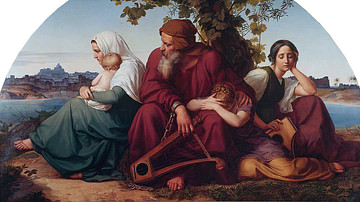Illustration
By his skinny body, overly large head, and short garment, the boy is characterized as a slave. It is very likely that the statue belonged to a large funerary monument in Tarentum. The boy probably looked up to the statue of his deceased master standing in a small funerary temple. Limestone. Acquired in 1881 CE. From the necropolis area at Tarentum, Italy. 3rd century BCE. It is on display at the Altes Museum in Berlin, Germany.
About the Author
Cite This Work
APA Style
Amin, O. S. M. (2019, October 27). Mourning Slave Boy from Tarentum. World History Encyclopedia. Retrieved from https://www.worldhistory.org/image/11376/mourning-slave-boy-from-tarentum/
Chicago Style
Amin, Osama Shukir Muhammed. "Mourning Slave Boy from Tarentum." World History Encyclopedia. Last modified October 27, 2019. https://www.worldhistory.org/image/11376/mourning-slave-boy-from-tarentum/.
MLA Style
Amin, Osama Shukir Muhammed. "Mourning Slave Boy from Tarentum." World History Encyclopedia. World History Encyclopedia, 27 Oct 2019, https://www.worldhistory.org/image/11376/mourning-slave-boy-from-tarentum/. Web. 21 Apr 2025.








